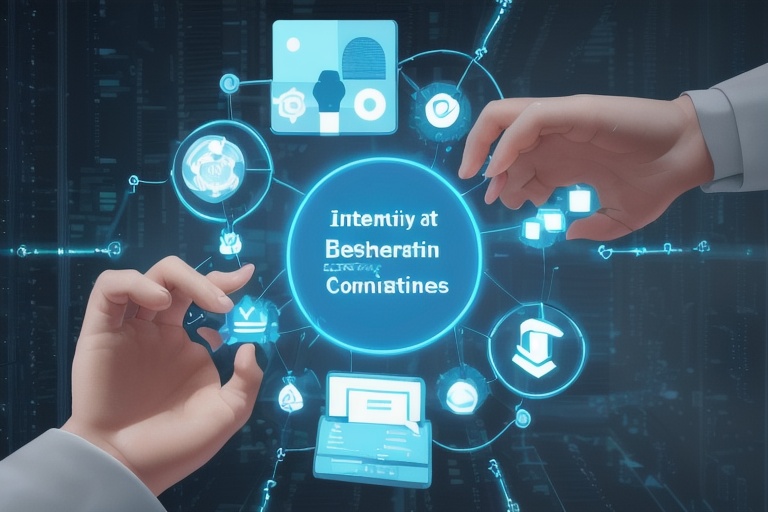Artificial Intelligence (AI) has rapidly evolved from mere science fiction tropes and cinematic fascinations into a robust field of research and development that is reshaping the way we live, work, and interact. This once-distant concept now touches almost every aspect of modern life, from the way we navigate our cities, to the personal assistants in our smartphones, and even to the way businesses analyze data and predict consumer behavior.
Artificial Intelligence (AI) has rapidly evolved from mere science fiction tropes and cinematic fascinations into a robust field of research and development that is reshaping the way we live, work, and interact. This once-distant concept now touches almost every aspect of modern life, from the way we navigate our cities, to the personal assistants in our smartphones, and even to the way businesses analyze data and predict consumer behavior.
Rethinking AI: From Fears to Opportunities
Commonly misunderstood, AI is not a monolithic field intent on crafting machines to usurp humanity, but a multifaceted domain aimed at leveraging technology to expand and amplify our capabilities. The conversation around AI is frequently painted with broad strokes of anxiety and apprehension, fueled by dramatic portrayals and the inevitable cultural unease that accompanies rapid technological change. However, when we strip away the hyperbole, we uncover four key approaches that constitute the backbone of AI research and its impact on societal advancement.
The Pillars of AI: Understanding the Categories
Classical AI
The initial category of AI, known as classical artificial intelligence, strives to create machines that mirror human cognitive functions. This ambitious pursuit dates back to the 1950s, when the dream of building computers with human-like intelligence first captured the imagination of researchers. While significant strides have been made in specific areas — such as natural language processing, chess, and other forms of symbolic reasoning — the quest to fully replicate the human intellect has proven to be a herculean task.
Expert systems, a noteworthy attempt in this category, sought to encapsulate the knowledge and decision-making abilities of human specialists. These rule-based systems were once thought to possess the potential to replace human experts. Despite showing early promise, as in the case of medical diagnosis systems in the 1970s and 1980s, they encountered practical limitations. The expertise captured by these systems was often static and failed to keep pace with the dynamic and nuanced nature of human judgment.
As researchers came to grips with the complexities of emulating human thought, classical AI's grand aims began evolving toward creating tools that complement and augment human capabilities, setting the stage for the second category.
Human-Computer Interaction (HCI)
Developing in parallel to classical AI, human-computer interaction made its own inroads. HCI focuses on crafting synergistic relationships between people and computers, building a bridge across which human intellect and machine processing power could travel toward collective goals. J.C. Licklider's vision of "Man-Computer Symbiosis" during the 1960s has indeed materialized in ways even he might not have anticipated. The symbiotic relationships fostered by HCI have given rise to intuitive graphical user interfaces and sophisticated algorithms that empower everything from PCs to smartphones, transforming the digital landscape into a more accessible and immersive environment.
Looking Ahead: Statistical Machine Learning and Deep Learning
Gazing toward the horizon, AI continues to evolve, with statistical machine learning and deep learning forming the vanguard of contemporary research. These cutting-edge realms are already having a profound effect on revolutionary tasks such as image and speech recognition, natural language translation, and even predictive modeling that informs decision-making processes in various industries.
Statistical Machine Learning: Bridging Data and Prediction
Statistical machine learning harnesses the power of data to enable systems to learn from experience, improve over time, and make predictions based on patterns. It's a field built on the foundations of statistics and computer algorithms, and it's shaping tools that can identify trends, discern insights from vast datasets, and anticipate future events — all while continuously enhancing their accuracy.
Deep Learning: The Emergence of Neural Networks
A subset of machine learning, deep learning takes inspiration from the human brain's neural networks. It empowers computers to learn complex patterns through layers of abstraction, revolutionizing tasks such as computer vision, where machines interpret visual information with staggering precision, and voice recognition, which allows for more natural and responsive interactions with technology.
AI's Role in Society: Ethical Considerations and Human Collaboration
The diversity within AI and its boundless applications prompt crucial conversations regarding its ethical implications, potential risks, and the guidelines we must establish to ensure that these technologies benefit society. By approaching AI with an informed perspective and a nuanced understanding of its capabilities, we can foster open dialogues that promote both innovation and responsible usage.
As we anticipate further advancements in AI, we are reminded that intelligent machines are not our replacements but our partners. By harnessing their potential responsibly, AI can not only extend but also enrich human productivity, creativity, and well-being, leading to a future of unprecedented collaboration between humans and machines.
In the subsequent installments of this series, we will delve deeper into the intricacies and implications of statistical machine learning and deep learning. Our exploration will span from the technical specifics of programming to the broader impact these technologies have on artificial intelligence as a whole. Stay tuned for compelling insights into the continuous transformation of AI and its consequential role in shaping our lives.
Information for this article was gathered from the following source.


